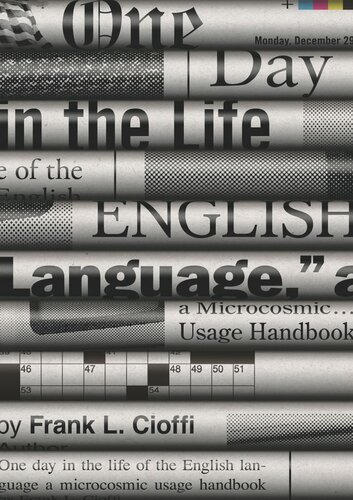

Most ebook files are in PDF format, so you can easily read them using various software such as Foxit Reader or directly on the Google Chrome browser.
Some ebook files are released by publishers in other formats such as .awz, .mobi, .epub, .fb2, etc. You may need to install specific software to read these formats on mobile/PC, such as Calibre.
Please read the tutorial at this link: https://ebookbell.com/faq
We offer FREE conversion to the popular formats you request; however, this may take some time. Therefore, right after payment, please email us, and we will try to provide the service as quickly as possible.
For some exceptional file formats or broken links (if any), please refrain from opening any disputes. Instead, email us first, and we will try to assist within a maximum of 6 hours.
EbookBell Team

4.8
24 reviewsGenerations of student writers have been subjected to usage handbooks that proclaim, "This is the correct form. Learn it"—books that lay out a grammar, but don't inspire students to use it. By contrast, this antihandbook handbook, presenting some three hundred sentences drawn from the printed works of a single, typical day in the life of the language—December 29, 2008—tries to persuade readers that good grammar and usage matter.
Using real-world sentences rather than invented ones, One Day in the Life of the English Language gives students the motivation to apply grammatical principles correctly and efficiently. Frank Cioffi argues that proper form undergirds effective communication and ultimately even makes society work more smoothly, while nonstandard English often marginalizes or stigmatizes a writer. He emphasizes the evolving nature of English usage and debunks some cherished but flawed grammar precepts. Is it acceptable to end a sentence with a preposition? It is. Can you start a sentence with a conjunction? You can. OK to split an infinitive? No problem.
A grammar and usage handbook like no other, One Day in the Life of the English Language features accessible chapters divided into "Fundamentals," "Fine Tuning," and "Deep Focus," allowing readers to select a level most suited to their needs. It also includes a glossary, a teachers' guide, and a section refuting some myths about digital-age English.